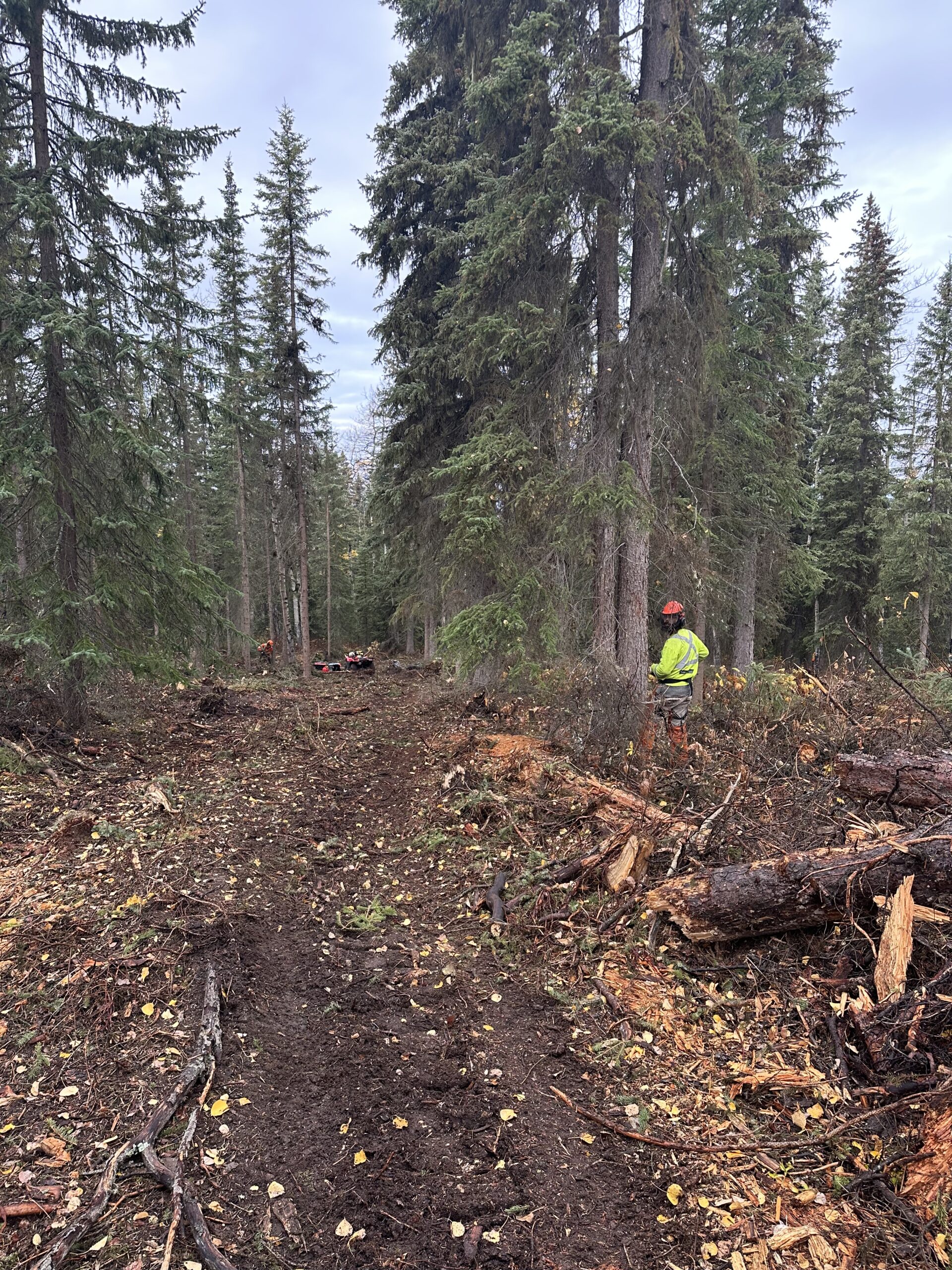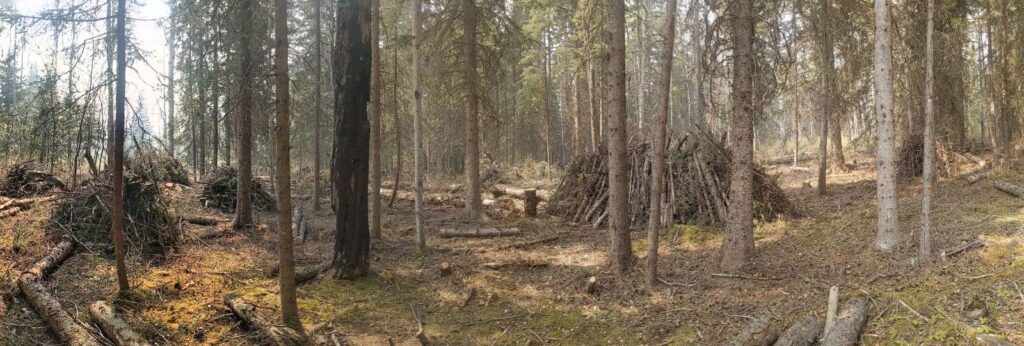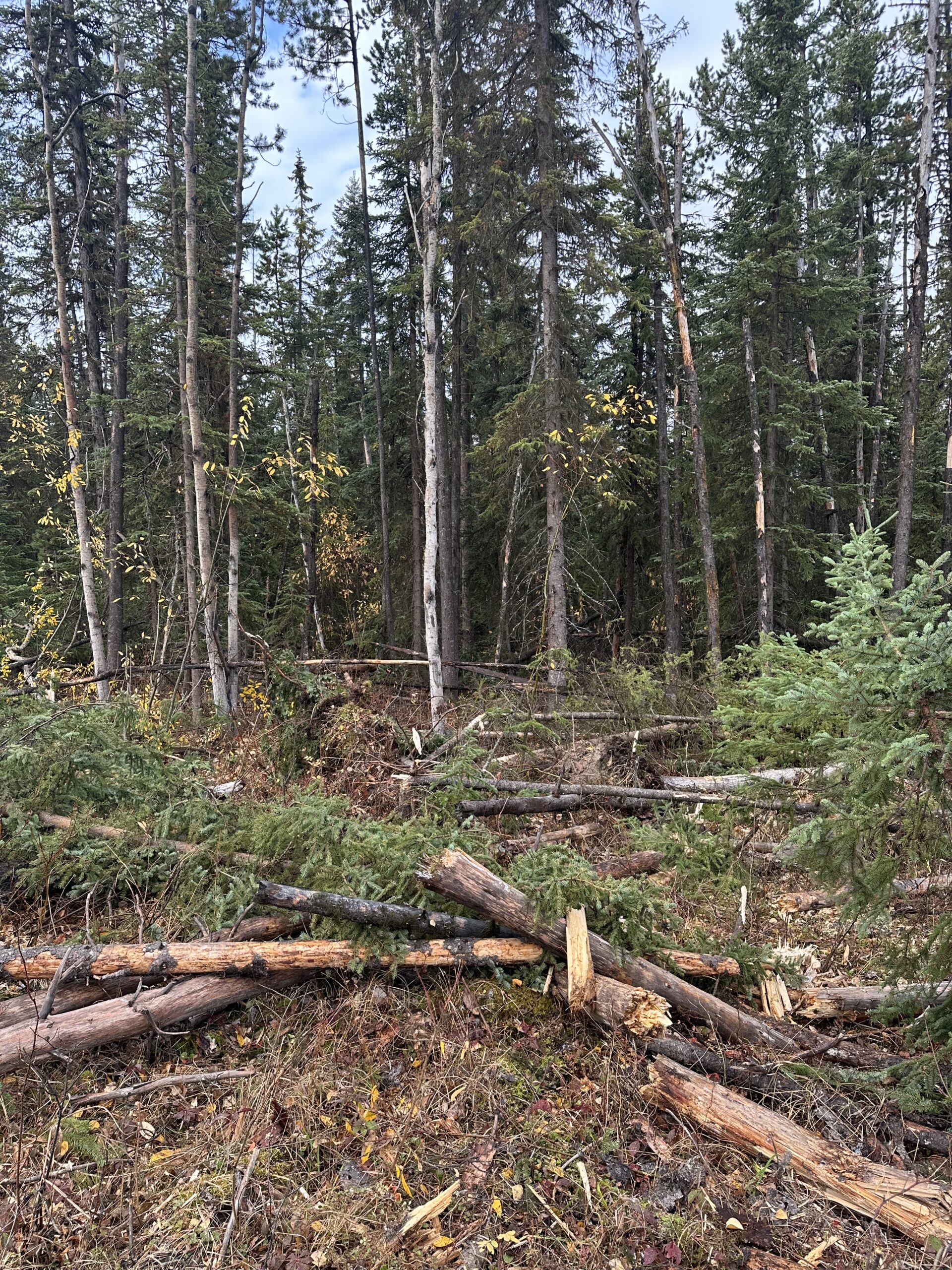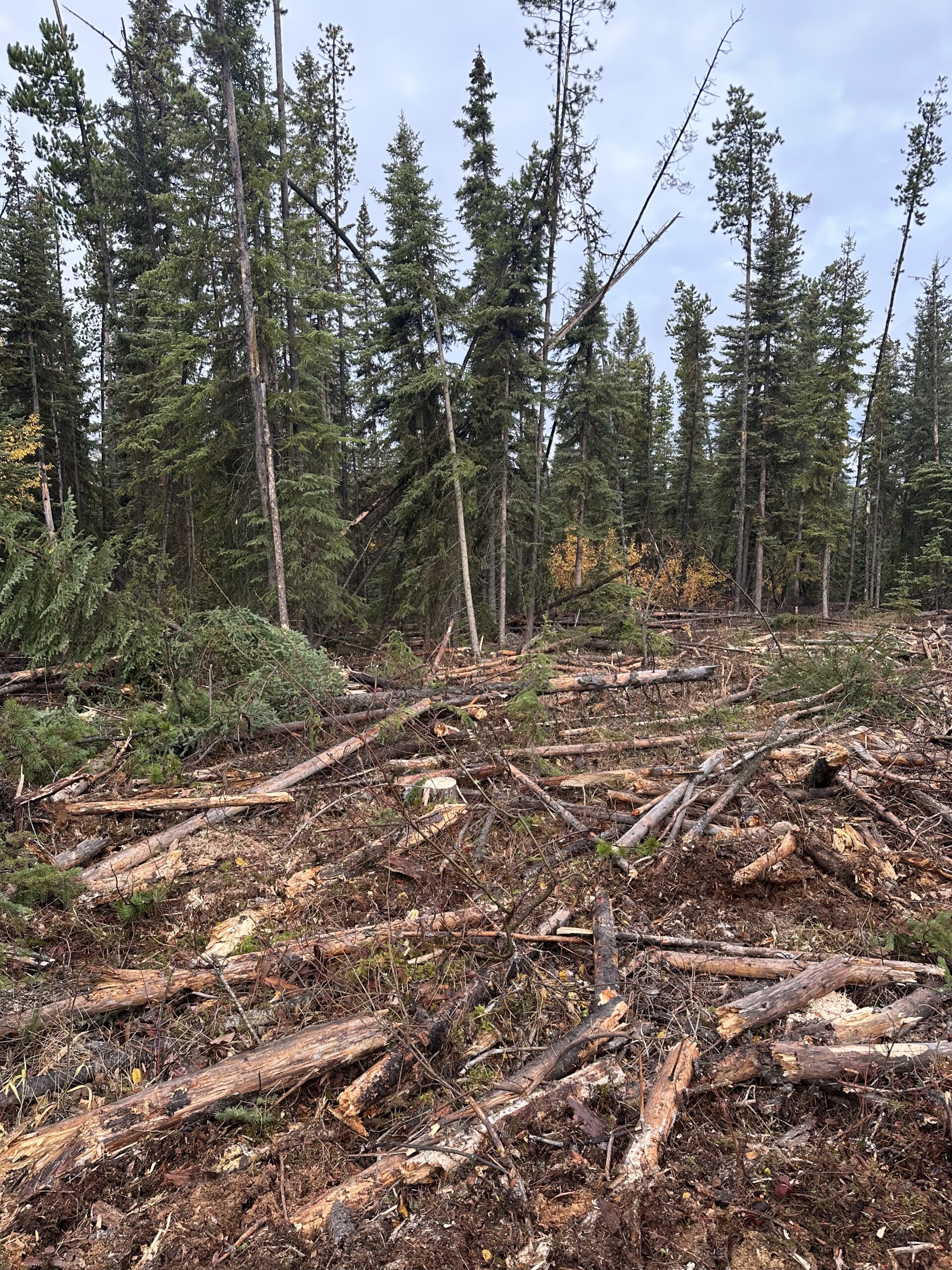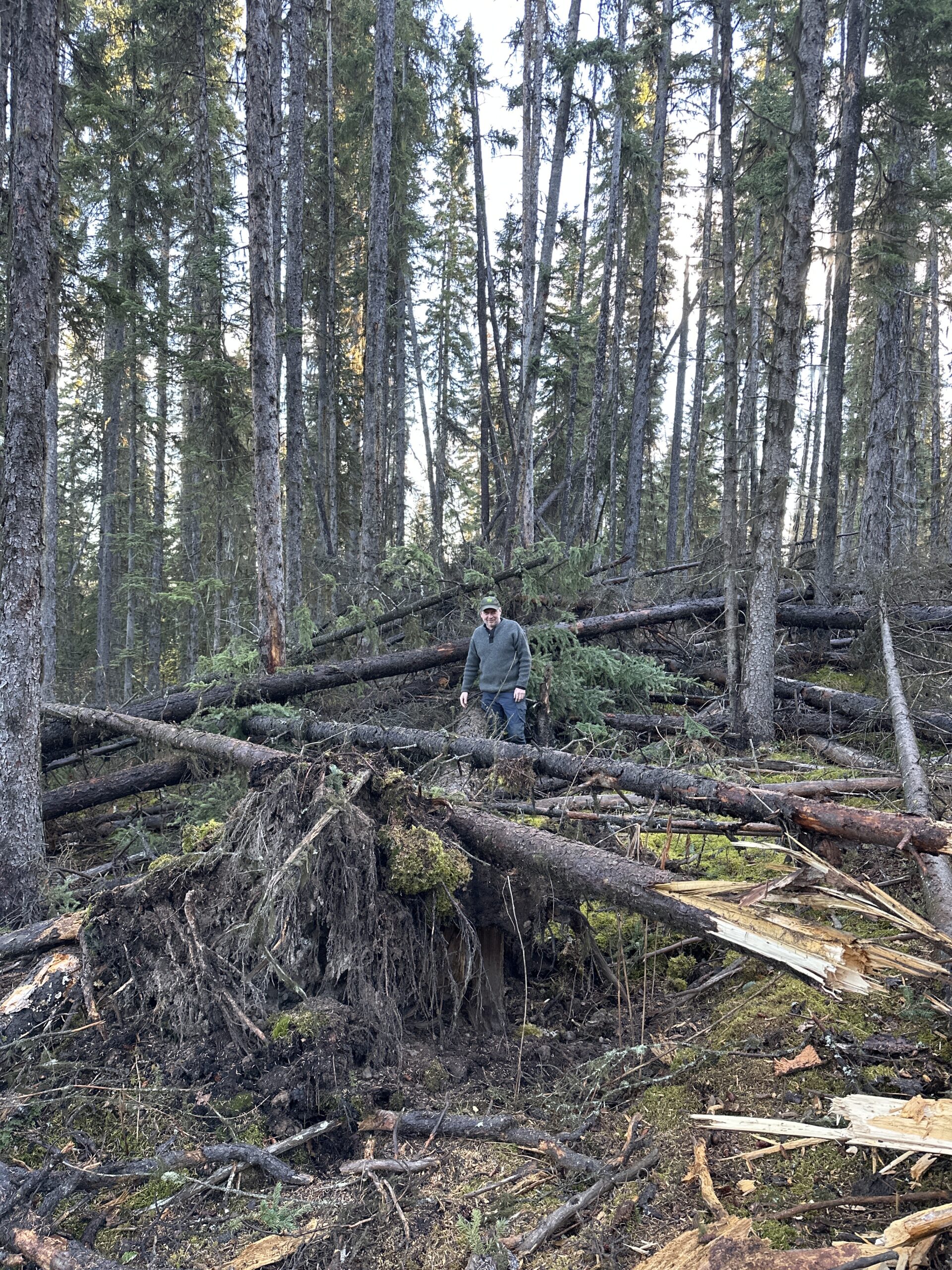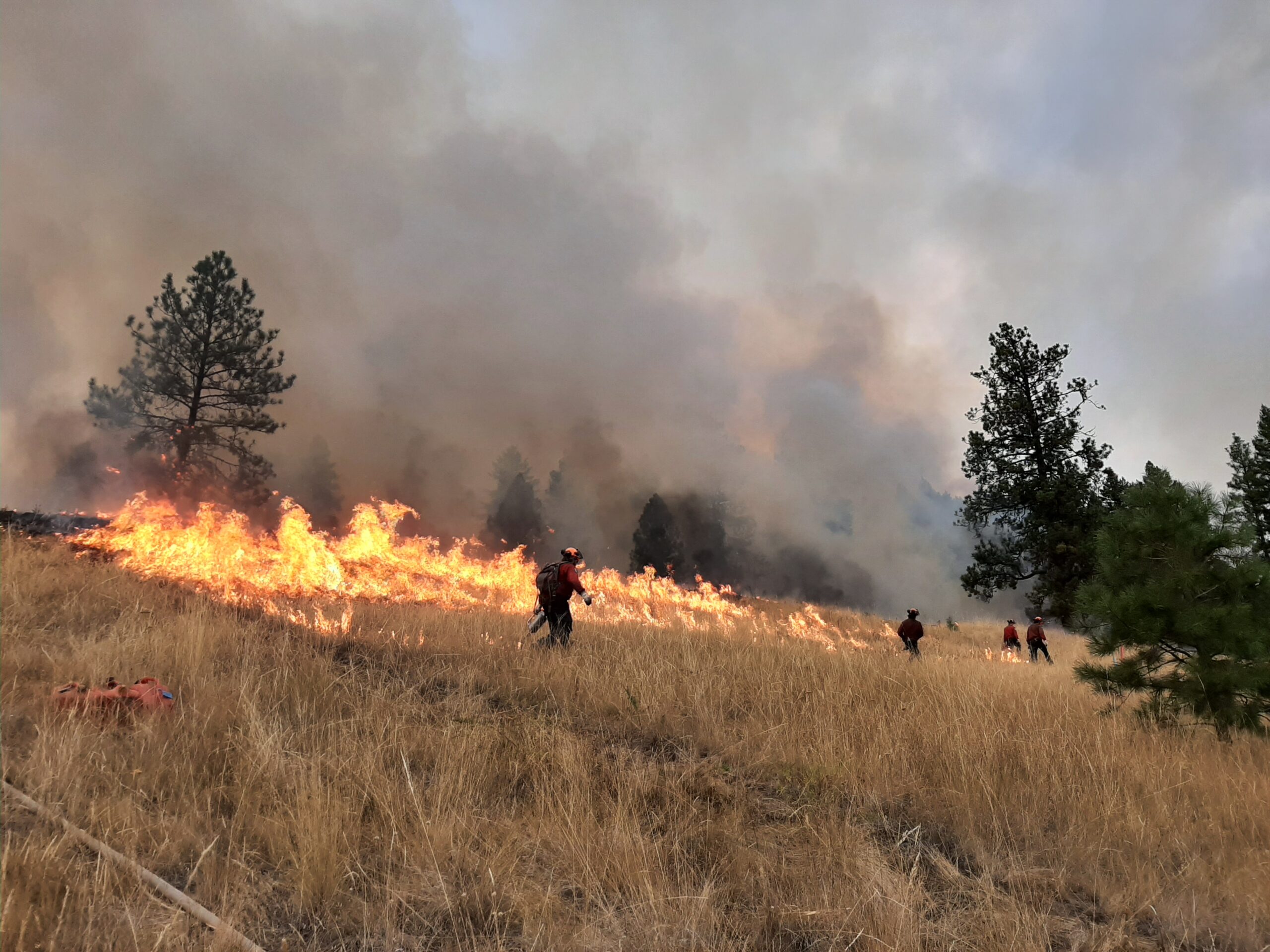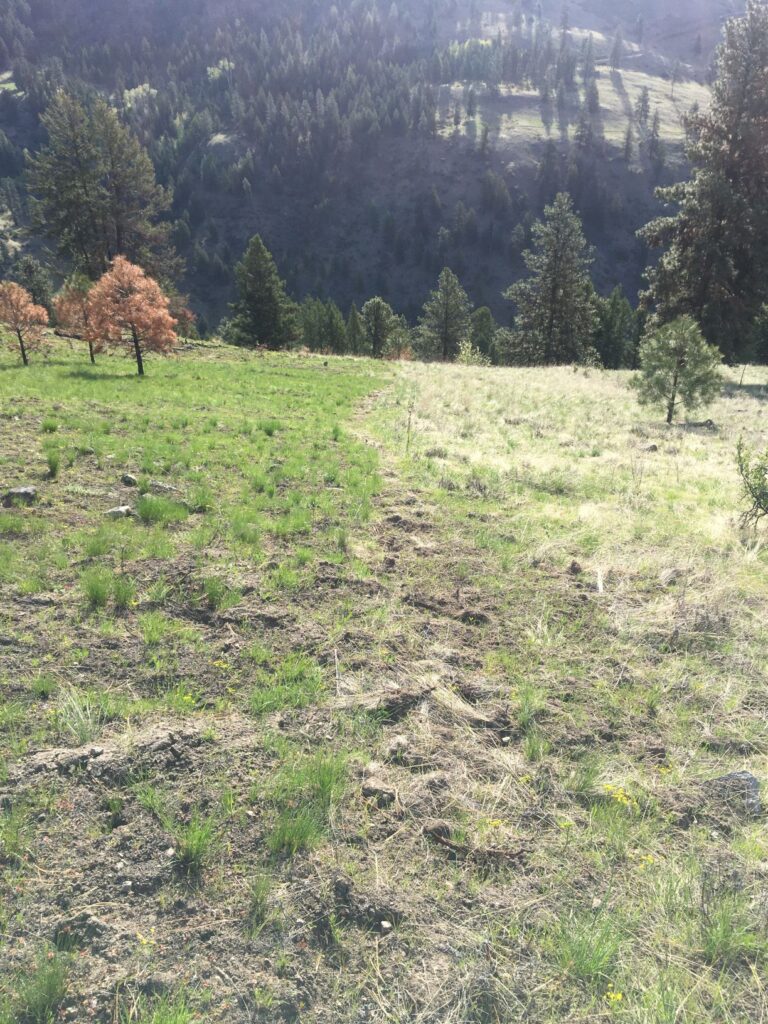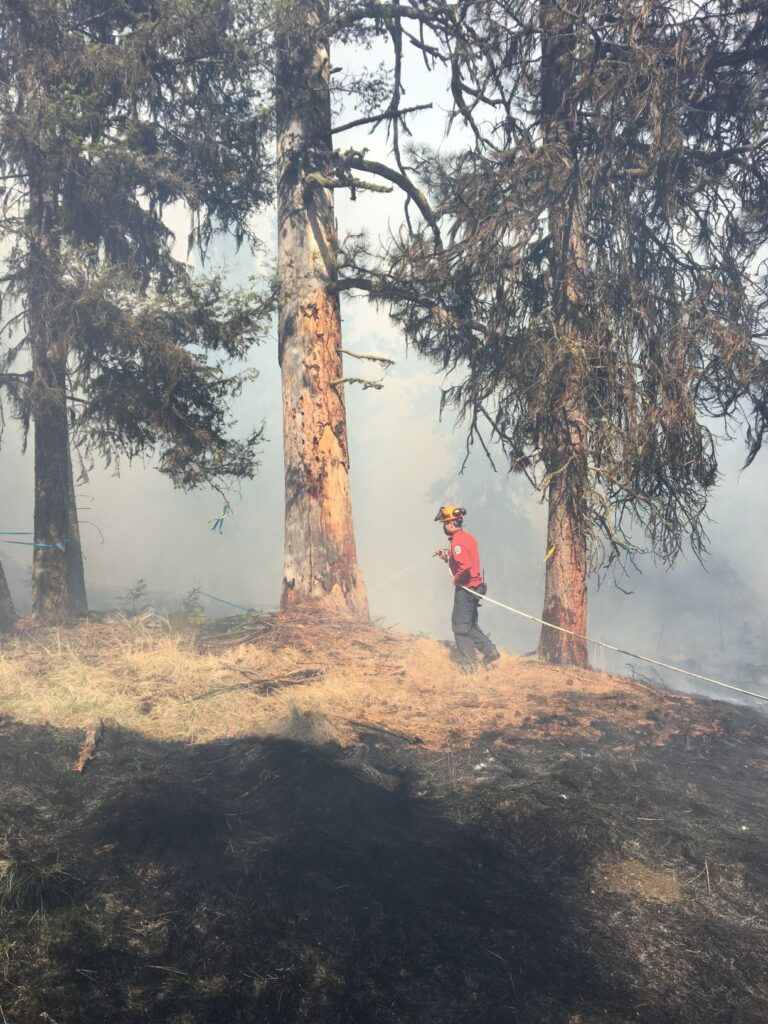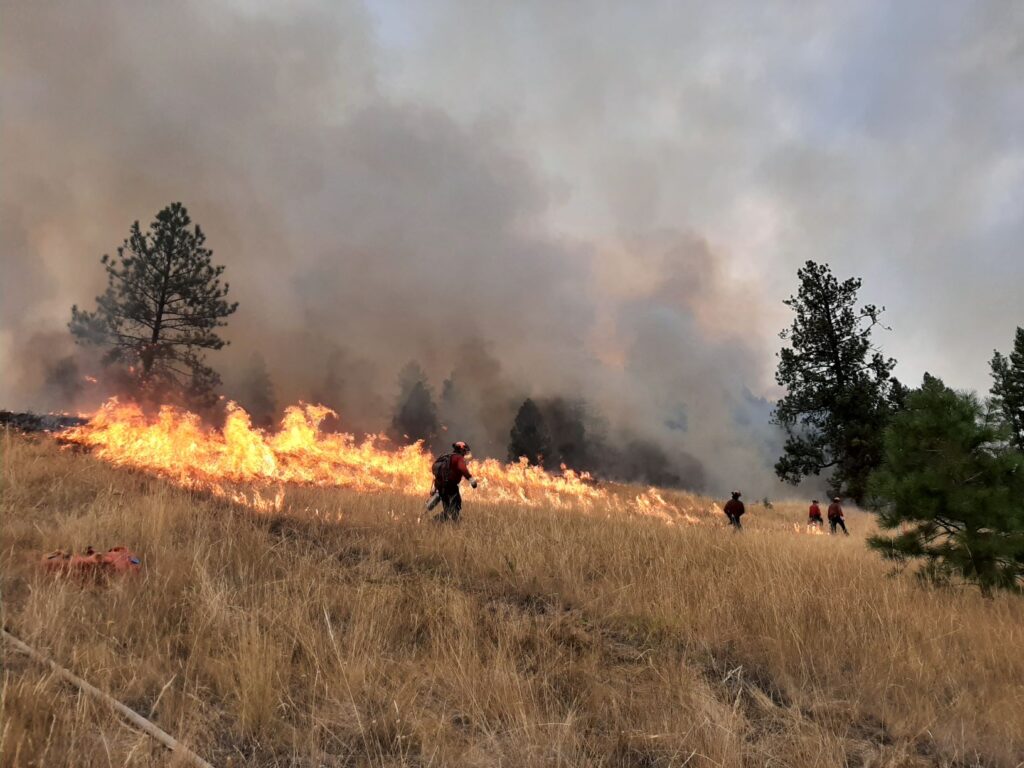Burns Lake, B.C. – In a continuous effort to mitigate risk to communities and essential infrastructure from the threat of wildfires, the Chinook Community Forest (CCF) has embarked on a vital wildfire risk reduction project with funding from the Forest Enhancement Society of BC (FESBC). Due to the large amounts of dead trees in the community forest caused by the mountain pine beetle pandemic, the initiative will have a far-reaching and positive impact on communities. These include areas on the south side of Francois Lake, including Eakin Settlement Road, Keefe’s Landing Road, and Tatalrose Road, as well as outlying communities such as Burns Lake, Danskin, Southbank, Tayksie, Southshore of Ootsa Lake, Sheraton, and Rose Lake.
Ken Nielsen, general manager of the CCF, explained that 80 per cent of the Lakes Timber Supply Area (LTSA) has pine-leading stands, which means that 80 per cent of the LTSA forest is comprised mainly of lodgepole pine, with the remaining 20 per cent comprised of spruce, balsam, and a little bit of fir. This pine-leading stand has been impacted by the mountain pine beetle epidemic, with nearly all the lodgepole pine trees falling over the last two decades which have built up a layer of four to five feet on the forest floor of dead wood—creating a very high risk for extreme fires.
“With all this dead wood on the ground, there is the potential to have a very high degree of fire behaviour, which could transfer to crown fires, where the fire is able to move to the tops of the trees, jumping from one tree to another at a much faster speed, which firefighters from BC Wildfire Services can’t handle. This situation, if pushed by wind, drives fires into communities. There is a need to clean the forest floor of this dead wood, along with pruning and thinning of the forest stand structure, so in the event there is a fire, it remains on the forest floor at a low intensity, and BC Wildfire Services has a better chance to control it,” said Nielsen.
Photos Second Row: Hand treatments being performed after a mechanical selective harvest has taken place;
Photos credit: Ken Nielsen, Chinook Community Forest.
As part of the project, the community forest will be working on three different wildfire risk reduction areas that are prescribed for treatment which will cover roughly 200 hectares next to private property in the community. CCF is also developing prescriptions for Wildfire Risk Reduction treatments on roughly 900 hectares.
“The Forest Enhancement Society of BC plays a huge role as the third-party administrator of funds to help carry out critical wildfire risk reduction work that needs to be done in and around communities. A lot of the work that needs to be done is either hand pruning or thinning, selective logging, and the raking of fine fuels. Because this type of work does not create a source of income to pay for these treatment areas, it is very costly and would not have been possible without FESBC’s support,” said Nielsen.
This project is unique in that the proposed area was identified in the Crown Land Wildfire Risk Reduction Tactical Plan for Burns Lake, Rose Lake, Sheraton, and Highway 16 and developed by the Nadina Natural Resource District. The area gained prominence following the 2018 wildfires, prompting the local Ministry staff to pioneer one of the first landscape tactical plan in British Columbia. A landscape tactical plan is a strategic document that assesses and addresses specific hazards and risks within a defined geographic area, such as wildfire threats, insect infestations, or flooding and outlines subsequent actions to manage and mitigate risks.
“Sustainable community forest management is critical to reducing wildfire risk in our province,” said Bruce Ralston, Minister of Forests. “The collaborative efforts of Chinook Community Forest and FESBC will not only help build forest health and resiliency but also better protect people in surrounding communities from wildfire risks.”
This past summer, during a period of active wildfires throughout the province of British Columbia, the importance of the Ministry of Forests’ landscape tactical plan became clear when a lightning strike occurred close to the project area. This incident highlighted the unpredictability of lightning strikes, and wildfires emphasizing that they can occur anywhere and at any time.
“This demonstrated that lightning is not biased to where and when it will strike,” said Nielsen. “It further demonstrated the need for more wildfire risk reduction work around communities and backed up the tactical plan developed by the Province in identifying areas of highest threat. While the tactical plan cannot prevent wildfires, it can significantly enhance the preparedness and response capabilities of Chinook First Responders Society, working in tandem with BC Wildfire Service, to effectively combat wildfires.”
Work on the FESBC-funded project, which started back in the spring of 2023 in Southbank around the Indian Bay area, has been progressing well despite occasional interruptions by Mother Nature, according to Nielsen. Through this project, important resources within the community, including the community of Danskin, a local pharmacy, several residences and businesses, the Cheslatta Carrier Nation’s new office, and a Mennonite church, will all benefit from the wildfire risk reduction work.
Gord Pratt, FESBC’s senior manager said, “FESBC is proud and feels lucky to support such a proactive initiative by the Chinook Community Forest to reduce the wildfire risk to many of the communities at a high risk of being impacted by future wildfires on the south side of Francois Lake and the Burns Lake area.”
Moreover, the treatment units not only address high-risk areas but also provide job opportunities for local contractors and First Nations. It also supports maintaining trail systems in and around the area so people can better access areas to recreate and connect with the land. The work will also help with cattle grazing where these areas overlap by providing better access for the cattle and promoting the growth of grass.
Village of Burns Lake Mayor Henry Wiebe appreciated the work being done by CCF and highlighted its significance. “The wildfire risk reduction treatments being carried out by Chinook Community Forest are an important part of forest management. The treated areas increase security against wildfires, create wildlife corridors, and enhance wildlife habitat,” he said.
As a community forest, CCF is diligently balancing various objectives, including addressing local needs, providing compensation, generating employment, enhancing the forest’s natural beauty, and mitigating the ever-present wildfire risk.
FESBC would like to gratefully acknowledge the financial support of the Province of British Columbia through the Ministry of Forests.

